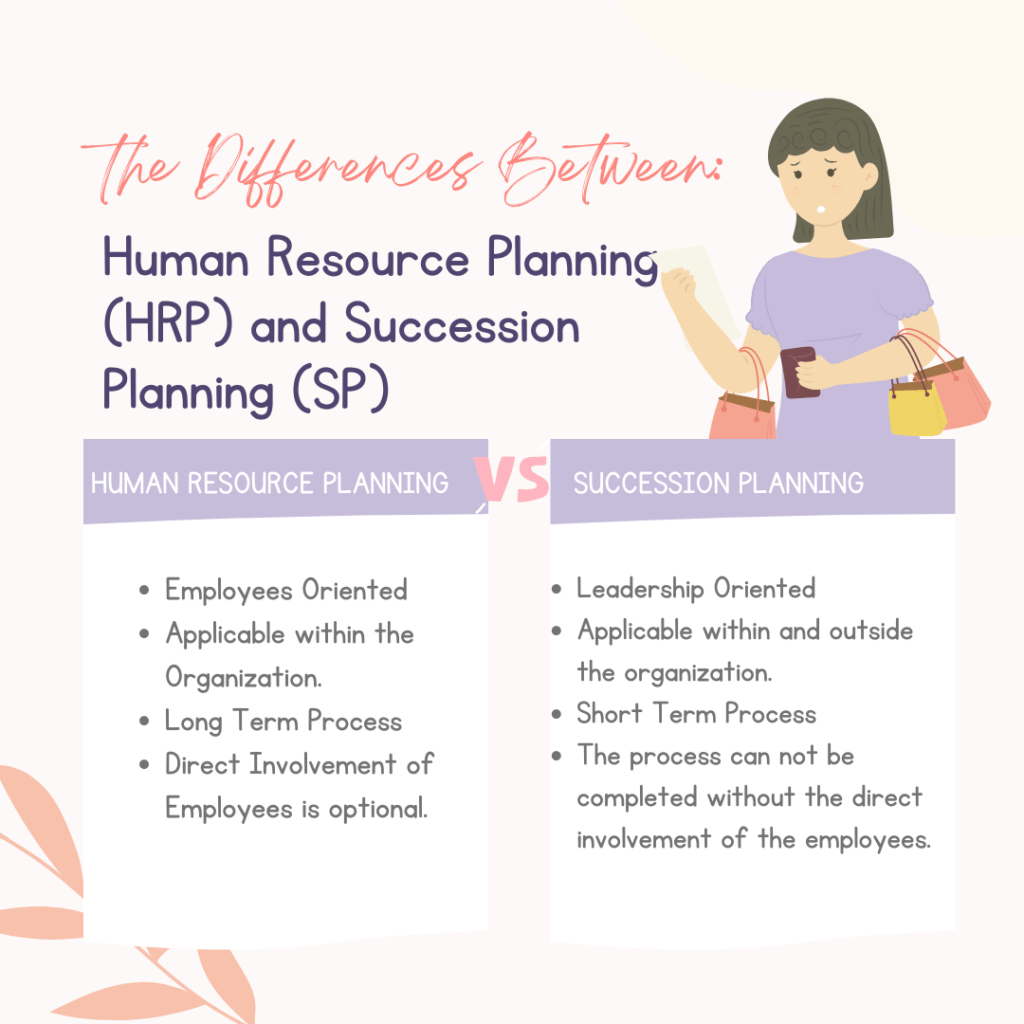Human Resource Planning (HRP) and Succession Planning (SP) have always been two cornerstones of HR practical training. These are the two important processes that organizations use to ensure their continued growth and success. Both processes involve the development and implementation of strategies to manage the workforce, but they have distinct differences that organizations must understand in order to effectively use them.
What is Human Resource Planning (HRP)
HRP is the process of analyzing and forecasting an organization’s human resource needs. It involves identifying the number and types of employees needed to meet the organization’s goals and objectives, and then developing strategies to acquire and retain those employees. This process includes forecasting workforce trends, analyzing workforce data, and identifying gaps in the workforce.
What is Succession Planning (SP)
Succession planning, on the other hand, is the process of identifying and developing internal candidates to fill key leadership roles within the organization. It involves identifying key positions within the organization that are critical to its success and then identifying and developing internal candidates who have the potential to fill those roles.

Difference between Human Resource Planning (HRP) and Succession Planning (SP)
Intent
One key difference between HRP and SP is their focus. HRP is focused on ensuring that an organization has the right number and type of employees to meet its goals and objectives, while SP is focused on ensuring that an organization has the right individuals in place to fill key leadership roles.
Applicability
Another difference is the scope of their application. HRP is typically applied to all employees within an organization, whereas in SP potential professionals are considered even outside the organization for the key leadership positions.
Temporally
HRP and SP also differ in terms of the timeline. HRP is a long-term process that is used to plan for future workforce needs, whereas SP is a shorter-term process that is used to plan for the immediate and future leadership needs.
Involvement
Another important aspect to consider is the level of involvement of employees in both processes. In HRP, employees may not be directly involved in the process, whereas in SP, employees who are being groomed for key leadership roles are typically involved in the process.
It is important to note that HRP and SP are not mutually exclusive, and organizations can benefit from using both processes together. By combining the two processes, organizations can ensure that they have the right number and type of employees to meet their goals and objectives and that they have the right individuals in place to fill key leadership roles.

Final Words
HRP and SP are two important processes that organizations use to ensure their continued growth and success. While both processes involve the development and implementation of strategies to manage the workforce, they have distinct differences that organizations must understand in order to effectively use them. HRP is focused on ensuring that an organization has the right number and type of employees to meet its goals and objectives, while SP is focused on ensuring that an organization has the right individuals in place to fill key leadership roles. Combining the two processes can provide organizations with a comprehensive approach to managing their workforce and ensuring their long-term success.
And thus, the next time you choose an HR course for yourself, make sure the HR certification provider thoroughly explains this important idea to you.





Leave a Reply